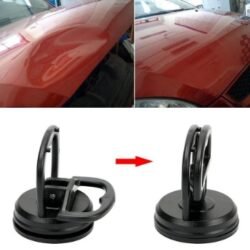How to Fix My Speaker Bass: A Comprehensive Guide
 If you are experiencing issues with your speaker bass and wondering, “How can I fix my speaker bass?”, you are not alone. Many people face bass distortion or low bass performance in their speakers. Whether you’re using speakers for music, gaming, or movies, bass clarity is crucial for an immersive sound experience. In this article, we will walk you through common bass issues and effective solutions to improve your speaker’s bass.
If you are experiencing issues with your speaker bass and wondering, “How can I fix my speaker bass?”, you are not alone. Many people face bass distortion or low bass performance in their speakers. Whether you’re using speakers for music, gaming, or movies, bass clarity is crucial for an immersive sound experience. In this article, we will walk you through common bass issues and effective solutions to improve your speaker’s bass.
Fix My Speaker Bass: Solutions to Improve Your Speaker’s Sound Quality
If you’re not happy with the sound of your speaker and looking for ways to Fix My Speaker Bass, don’t worry! Many bass-related issues can be easily resolved, and you can improve the bass performance of your speaker. First, check if your speaker is properly connected to your device and if the sound settings are configured correctly. Sometimes, incorrect settings can cause a lack of bass.
One common way to Fix My Speaker Bass is by using sound adjustment software, which allows you to tweak the bass frequencies to your liking. These programs are especially useful when your speaker is connected to a computer or mobile device. Additionally, checking the cables and speaker connections can help fix bass issues, as loose or damaged cables can often lead to a decrease in bass quality.
If the bass problem persists, you can Fix My Speaker Bass by replacing the speaker driver or purchasing a bass booster. These tools can provide deeper and clearer bass, especially for those who enjoy powerful sound.
Finally, if all else fails, visiting a professional technician to Fix My Speaker Bass might be your best option. Expert repair technicians can diagnose more complex problems and help you get your speaker performing at its best.
What Causes Low Bass in Speakers?
Before diving into how to fix your speaker bass, it’s essential to understand what might be causing the low bass performance. There are several common reasons for this issue:
| Cause | Explanation |
|---|---|
| Speaker Placement | Poor placement of speakers in a room can result in reduced bass output. |
| Audio Source Settings | Incorrect settings on your audio device can negatively impact bass performance. |
| Speaker Quality | Cheap or low-quality speakers might not produce deep bass. |
| Amplification Issues | An underpowered amplifier can result in weak bass. |
By understanding these causes, you can better address the issue and work towards fixing your speaker bass.
How to Fix My Speaker Bass: Step-by-Step Guide
1. Adjust the Speaker Placement
One of the easiest ways to improve bass performance is to reposition your speakers. Bass frequencies are sensitive to placement, and even a small change can have a noticeable impact. Try placing your speakers closer to walls or corners, as this can help amplify low frequencies.
Tips for Optimal Placement:
- Avoid placing speakers directly against walls to reduce distortion.
- Experiment with speaker height and angles for better bass response.
- Place speakers on sturdy surfaces to avoid vibration.
2. Fine-Tune Audio Source Settings
Your audio device might be the culprit behind low bass. Check the settings on your phone, computer, or audio system. Many devices offer equalizer (EQ) settings that allow you to adjust bass, treble, and midrange frequencies.
| Audio Device Settings | Action |
|---|---|
| Smartphone | Adjust EQ settings to increase bass levels. |
| PC or Laptop | Use software like Equalizer APO to enhance bass. |
| Home Audio Systems | Increase bass through built-in sound settings. |
By customizing your device’s settings, you can boost bass output significantly.
3. Upgrade Your Speakers
If you’ve tried adjusting the placement and settings without improvement, it might be time to upgrade your speakers. Low-quality speakers often struggle to produce deep bass, so investing in a high-quality speaker system can make a world of difference.
| Speaker Type | Advantages |
|---|---|
| Subwoofer | Provides deep, powerful bass. |
| Full-Range Speakers | Offers a balanced range of sound, including bass. |
| Tower Speakers | Known for strong bass performance. |
4. Use an Amplifier
An underpowered amplifier can prevent your speakers from producing full bass. Make sure your amplifier matches the wattage requirements of your speakers. If your speakers are not getting enough power, the bass will sound weak and underwhelming.
5. Try Bass Boosters
Another solution to fix my speaker bass is by using bass boosters or sound processors. These devices can help enhance low frequencies and improve the overall bass response of your speakers. You can find standalone bass boosters or software applications that provide similar functionality.
When to Call a Professional?
If you’ve tried all the above methods and still can’t fix your speaker bass, it may be time to consult a professional. Sometimes, the issue lies with internal speaker components or the amplifier, which may require expert repairs.
Final Thoughts
Fixing your speaker bass can be as simple as adjusting the placement or audio settings. However, if you’re looking for a permanent solution, upgrading your speakers or investing in a better amplifier may be necessary. Remember that the key to great sound lies in both the equipment and the way it’s set up.
For more tips on improving your audio setup and boosting your bass, visit MotiGoods, your one-stop shop for the best audio accessories!
References:







